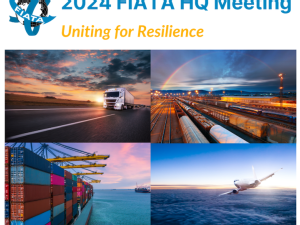How much attention should we pay to flying cars?
Right now, flying cars fall somewhere between pipe dream and prototype. True commercial testing is still at least five years away, even according Uber Technologies Inc.’s optimistic assessments. And that’s if this new breed of aircraft ever clears the operational and regulatory hurdles.
Still, the dream of personal aircrafts buzzing around cities, avoiding traffic, is exciting to fantasize about. So, the tech world couldn’t look away when the ride-hailing company held its second annual Uber Elevate conference in Los Angeles. Uber isn’t itself building this new breed of urban mobility aircraft, which the industry has taken to calling eVTOLs (electric vertical takeoff and landing). Instead, the company is striking partnerships in hopes that one day it can manage an air-taxi service that’s populated by other companies’ vehicles.
So far, Uber has five flying car-building partners, including one owned by Boeing Co. and another founded by the father of the predator drone. These are credible aircraft manufacturers, working on a new generation of vehicles designed to fly near dense urban areas. Onstage, the consensus among the companies building flying cars was that Uber’s 2023 limited commercialization deadline is aggressive, but possible.
Let’s make one thing very clear, however: There weren’t any flying cars to be seen at Uber’s flying-car conference.
The companies at Uber’s event largely offered up only small models of their imagined vehicles, sketches and a virtual-reality demo. Much of the rush into this new technology is predicated on the belief that large batteries needed to power electric vehicles are going to get better and cheaper. And even if companies overcome the technical challenges, the aircraft will have to pass rigorous safety testing.
Then, perhaps most importantly, flying cars will need regulatory buy-in. Today, the U.S. government’s approach to aircraft regulation is the opposite of iterative. The Trump administration seems friendly to aircraft experimentation. (The Department of Transportation just announced that it was approving a number of drone exemptions.) But the Federal Aviation Administration is still a safety-obsessed, risk-averse regulator that made clear at Uber’s conference that it expects this new generation of aircraft to maintain current safety standards.
So what’s a flying-car obsessed media and general public to do? There’s a lesson to be learned from self-driving cars. Back in 2010, the New York Times wrote a story that would become a trope: reporter rides in self-driving car, marvels at potential far-reaching economic and social consequences, and warns that these vehicles are still very far away. That hasn’t stopped us from fixating on their potential. And I worry, at times, losing sight of the present.
Flying cars have been a good diversion from Uber’s self-driving fatality—just as autonomous cars have distracted from questions about how we treat human drivers today. But urban transit faces far more pressing questions: Can we modernize public transportation systems? How can companies and lawmakers protect the real human who is driving you around? How much of our transportation infrastructure should we yield to the private sector?
The sky might be the limit, but let’s not forget that we all still have to live together here down on the ground.











